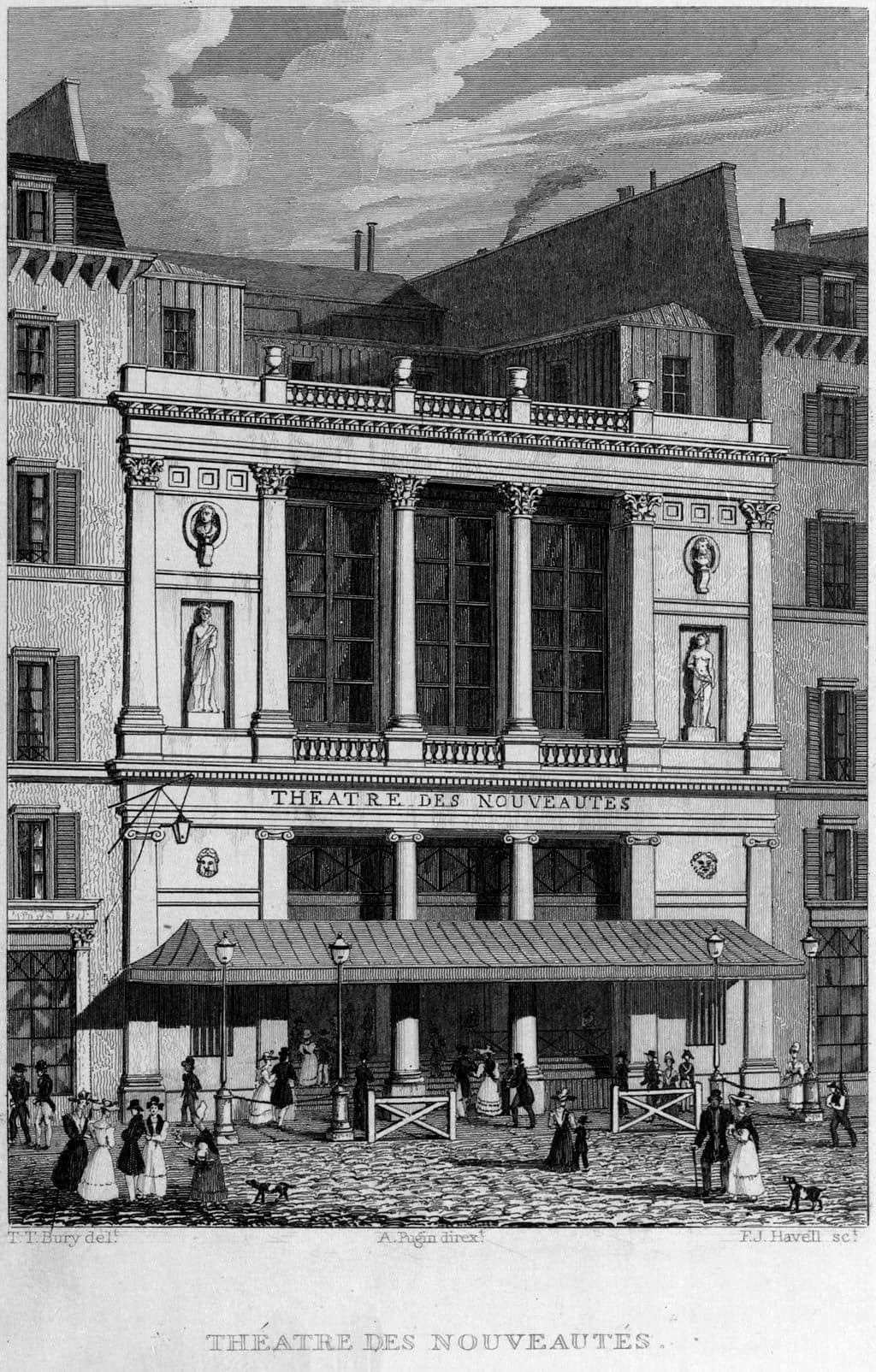Not everything went according to plan when Gaetano Donizetti introduced his opéra comique La Fille du regiment (The Daughter of the Regiment) to the general public on 11 February 1840. The “Salle de la Bourse” was filled to the brim, but the lead tenor Claude-Marie-Mécène Marié de l’Isle, who fortunately used the stage name Marié, had a decidedly off-night. Frequently singing off-pitch, Marié almost caused the collapse of the opera with Donizetti in the audience.
Gaetano Donizetti: La Fille du regiment, “Ah! mes amis,” (Ah! my friends)
First Negativity
Since the most famous aria “Ah! mes amis,” (Ah! my friends) requires the tenor to sing no fewer than eight high Cs, with a ninth frequently added, a struggling Marié certainly didn’t help matters. However, there was an additional reason why the opera came under fire, and that reason was presented in a highly negative review by the French critic and composer Hector Berlioz.

Salle de la Bourse
Berlioz claimed that neither the public nor the composer could take this opera seriously, as “with two major scores for the Opéra, Les martyrs and Le duc d’Albe, two others at the Théâtre de la Renaissance, Lucia de Lammermoor and L’ange de Nisida, two at the Opéra-Comique, La fille du régiment and another whose title is still unknown, and yet another for the Théâtre-Italien, will have been written or transcribed in one year by the same composer!
Donizetti treats us like a conquered country; it is a veritable invasion. One can no longer speak of the opera houses of Paris, but only of the opera houses of Monsieur Donizetti.”
Gaetano Donizetti: La Fille du regiment, “Chacum le sait”
The Story
Indeed, Donizetti had been a busy man during his residence in Paris between 1838 and 1840. He was actually working on the Italian opera Poliuto for the Paris Opéra, but as that production was delayed, he decided to write the music for La Fille du Regiment, composed to a French libretto by Jules-Henri Vernoy de Saint-Georges and Jean-François Bayard. Unlike most operas, which are based on pre-existing literary or historical sources, La Fille du Regiment features an original story developed by the librettists.

The French tenor Mécène Marié de l’Isle (1811–1879)
Featuring youthful rebellion, family drama, and tender young love, La Fille du Regiment is one of the greatest operatic comedies ever written. It is set in the Austrian Alps and tells the story of Marie, a young orphan raised by a regiment of French soldiers. However, the man of her dreams turns out to be a rebel fighting against her French family, and she has to overcome war and disapproval, and even the discovery of her own noble birth to make the happy ending come true.
Gaetano Donizetti: La Fille du regiment, “Il faut partir”
The Plot
Marie was abandoned on a battlefield as a baby. A French regiment found and raised her, and Marie thinks of the soldiers as her family. Now an adult, Marie has recently fallen in love with Tonio, a peasant from a little Tyrolean village. Unfortunately, the French are fighting a war with Tyrol, and Sulpice, the sergeant of Marie’s regiment, is furious that Marie has fallen in love with an enemy. Tonio decides to join the regiment so that Marie can marry him. In the meantime, the Marquise of Berkenfield is traveling through Tonio’s village on the way to her country home.

Portrait of Gaetano Donizetti by Francesco Coghetti
She asks Sulpice to help her cross the war zone safely, and she discovers that Marie is her long-lost niece. She decides to take Marie away to live at her castle, but she harbors a secret. Marie is not her niece but her daughter born out of wedlock. As such, Marie cannot inherit the Marquise’s fortune, and it is arranged for her to marry the son of the amazingly wealthy Duchess of Krakenthorp. The wedding ceremony is interrupted by the arrival of Sulpice and Tonio, and when the Marquise sees how happy Marie and Tonio are together, she gives them permission to get married.
Gaetano Donizetti: La Fille du regiment, “Pour me rapprocher de Marie”
The Music
After the initial hesitation, the French capital surrendered to Donizetti’s compositional charms. The score bristles with infectious melodies and a hearty mixture of military tunes and moments of pathos. And while the plot may be clichéd, Donizetti’s music certainly isn’t. With customary elegance in regard to melody and structure, the work quickly rises above a vulgar farce. Scholars have suggested that Marie’s F minor-F major air in the finale to Act 1 stands as one of Donizetti’s greatest accomplishments in communicating genuine, deeply felt emotion.

Donizetti’s La Fille du Regiment, The Met Live in HD
The complete ease and naturalness of Donizetti’s setting of the French text was universally admired. Tonio’s air to the Marchioness, “Pour me rapprocher de Marie,” shows an equal refinement of sentiment and distinction of melody. Grateful writing for the voice is in evidence throughout the score, and during the 19th century, the Italian version was more popular in England and the USA. The opera truly re-entered the repertory around the second half of the 20th century and has since become part of the standard repertoire.
For more of the best in classical music, sign up for our E-Newsletter
